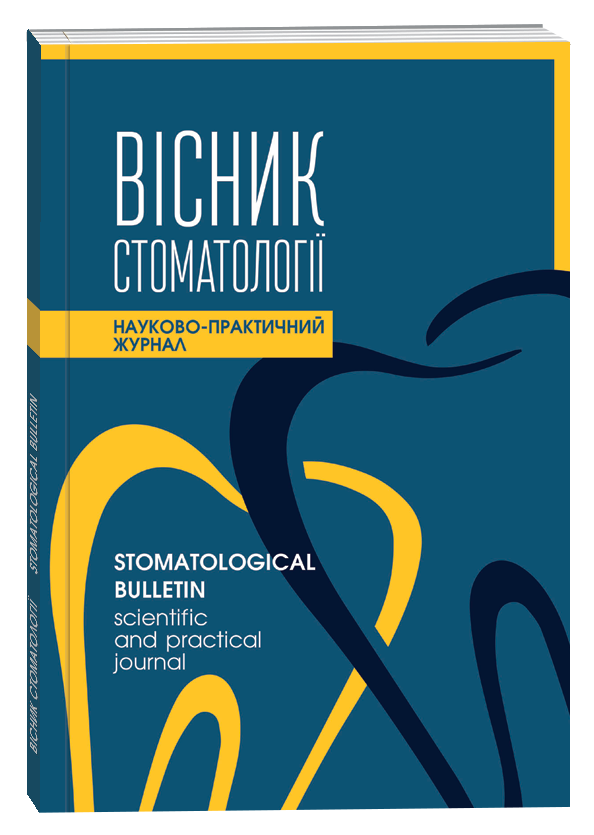FEATURES OF DESTABILIZATION OF THE MICROBIOM OF THE ORAL CAVITY WITH LACUNAR ANGINS IN CHILDREN
DOI:
https://doi.org/10.35220/2078-8916-2022-43-1.17Keywords:
lacunar sore throat, oral cavity, microbiomeAbstract
Purpose of the study. Investigate changes in taxonomic composition, microecological indicators and relationships between residents of microbiota in the ecosystem “macroorganism – microbiome” microbiota that persists in the oral cavity in children aged 3–17 years with lacunar angina. Research methods. Bacteriological and mycological study mucosal secretions of the palatine tonsils in case of lacunar tonsillitis in children showed an increasing in the spectrum of taxonomic composition of the oral microbiome from 12 to 21 taxa. The high level of associative coefficient of oral microbiome in case of lacunar tonsillitis is due to the peculiarity of the relationship between residents of the associated habitat microbiota, and the level of antagonistic activity of dominant taxa in relation to associates depends on the nature of both taxon and associate. Scientific novelty. The study of destabilization of the oropharyngeal microbiome and indicators of the ecosystem “macroorganism – microbes” microbiota of the oral cavity in case of lacunar angina in children is relevant and appropriate for the diagnosis and development of therapeutic tactics for treating patients with lacunar angina. Conclusions. The results showed that in case of lacunar tonsillitis in children taxonomic composition of the oral microbiome is changed due to the colonization of the habitat by pathogenic microorganisms – S. pyogenes, S. anginosus, S. aureus, P. aeruginosa, H. influenza, E. coli and C. albicans, which are not found in this habitat of almost healthy children. The dominant taxa of the oropharyngeal microbiome in lacunar tonsillitis are S. aureus, S. pyogenes.
References
Gajdhar S.K., Gajdhar S., Wali O. Diversity of oral microflora in oral and systemic diseases: A brief review. International Journal of Medical Research & Health Sciences. 2019. № 8 (6). P. 12–16.
Deo P.N., Deshmukh R. Oral microbiome: Unveiling the fundamentals. Journal of oral and maxillofacial pathology. 2019. № 23 (1). P. 122.
Haq S.N.U., Ayub Z., Ahmed A. Tonsillar Surface Micro Flora: Does it Truly Represent Pathological Tonsillar Flora? Journal of the College of Physicians and Surgeons – Pakistan. 2017. № 27 (1). P. 23–25.
Bajaj Y., Hore I. Diseases of tonsils, tonsillectomy and tonsillotomy. Scott-Brown’s Otorhinolaryngology Head and Neck Surgery. CRC Press, 2018. P. 435–442.
Isolation, identification and biochemical profile of pathogenic and opportunistic bacteria from sore throat / H.S. Orsud et al. The Gazette of Medical Science. 2020. № 1 (5). P. 004–012.
Worldwide comparison of treatment guidelines for sore throat / G. Coutinho et al. International Journal of Clinical Practice. 2021. № 75 (5). e13879.









